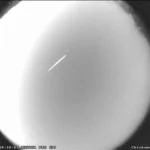Scientists have recently uncovered compelling evidence of our ancient human ancestors in an unexpected location: underwater. Ocean dredging in Indonesia’s Sundaland region, undertaken for the construction of an artificial island, has brought to light fossil fragments of a Homo erectus skull.
This remarkable discovery suggests that early hominins were far more mobile than previously thought, potentially “island hopping” across a vast, now-submerged landscape during the last glacial period.
Sundaland: A Prehistoric Paradise Revealed
Around 140,000 years ago, during a global glacial period, sea levels plummeted. This transformed what are now separate islands in Indonesia into a sprawling, interconnected landmass known as Sundaland.
A Landscape Transformed by Ice
During this ancient ice age, the sea levels in the Sundaland region were significantly lower. This meant that what are currently distinct islands rose like towering mountain ranges. Between them stretched a vast lowland savannah. This extensive dry grassland was crisscrossed by rivers, their banks lined with strips of forest. The environment was teeming with diverse wildlife, including crocodiles, river sharks, elephants, hippos, rhinos, and formidable carnivorous lizards.
Homo erectus: Not Isolated on Java
For a long time, it was widely believed that early humans, specifically Homo erectus, were largely isolated on the island of Java. However, the discovery of these new skull fragments challenges that assumption. The fossils, unearthed during ocean dredging for artificial island construction, indicate that Homo erectus migrated and spread extensively throughout these now-separated landmasses. They achieved this by walking across land bridges that were exposed when sea levels were considerably lower.
The Significance of the Underwater Discovery
The finding of Homo erectus remains on the seafloor fundamentally reshapes our understanding of their ancient movements and behaviors.
Expanding the Known Range of “Java Man”
Homo erectus was first identified in Java, earning the moniker “Java Man” before the species received its official scientific name. Yet, prior to this discovery, fossilized remains had never been found on the seafloor. This area now lies between what are currently the islands of Java, Bali, Sumatra, and Borneo.
Harold Berghuis, an archaeologist from the University of Leiden in the Netherlands, led the investigation into these newly dredged examples. He believes that Homo erectus strategically utilized this now-drowned land. They likely established settlements near the riverbanks that once traversed the region.
Life Along Ancient Rivers
Berghuis elaborated on this in a study published in Quaternary Environments and Humans. He explained, “Under the relatively dry Middle Pleistocene climate of eastern Java, herds of herbivores and groups of hominins on the lowland plains were probably dependent on large perennial rivers, providing drinking water and terrestrial as well as aquatic food sources.”
These ancient rivers would have offered abundant resources for human ancestors. Trees provided year-round fruit. Hominins could gather a variety of edible plants. They also engaged in fishing and gathering shellfish. Intriguingly, they may have even used mussel shells as tools, representing some of the oldest known evidence of such use. Some of these shells also bear ancient engravings, with the most ancient human engravings previously found on shells from Java.
The new findings further indicate that these early humans hunted river turtles and terrestrial animals. The bones of river turtles and ancient bovine ancestors showed clear cut marks and breakages. This suggests they consumed both meat and bone marrow, indicating advanced hunting and scavenging practices.
Connections to Other Hominin Species and Ecosystems
The new findings also open up exciting possibilities about inter-species interactions and broader ecological movements.
Shared Hunting Methods and Potential Interbreeding
More modern human species on the Asian mainland, such as Denisovans and Neanderthals, were already known to have hunted bovids (a family that includes cattle). While no direct evidence for this had been found on Java previously, the presence of these seafloor fossils could suggest a transfer of hunting methods from one hominin species to another.
The exposed land due to diminished sea levels didn’t just facilitate human migration. It also allowed animal species from the Asian mainland to spread to the Indonesian islands. This included the extinct Asian hippo and the endangered, but still existing, Komodo dragon. This broader ecological connection could even hint at the possibility of interbreeding between different hominin populations that met on these temporary land bridges.
Homo erectus: A Crucial Evolutionary Leap
Homo erectus represents a pivotal moment in human evolution, showing striking similarities to modern humans.
Physical Adaptations and Cognitive Growth
This species marked a significant shift in hominin evolution. They were the earliest hominids to display a greater resemblance to modern humans. Their bodies were larger, with longer legs and shorter arms relative to their torsos. This increased muscle mass likely enabled them to walk and run faster than earlier hominins, making them more adept hunters.
An increase in body size is also correlated with an increase in brain size. Skull analyses reveal that their brains were over 50% larger than those of early Australopithecus species. While the human brain would continue to evolve, becoming 40% larger by the time Homo sapiens emerged, this was a crucial step.
Morphological Diversity and Mobility
Berghuis and his team emphasized the significance of the late Middle Pleistocene age of the site. They stated, “The late Middle Pleistocene age of the site is of great interest in terms of hominin evolution, as this period is characterized by a great morphological diversity and mobility of hominin populations in the region.” This period saw dynamic changes in hominin populations, both in their physical characteristics and their ability to move across landscapes.
While rising sea levels eventually submerged these vital land bridges between the islands of Sundaland, this unprecedented dredging operation has provided an invaluable window. It offers incredible insight into the life and migratory patterns of Homo erectus in ancient Indonesia. This discovery underscores the dynamic nature of early human history and the impact of fluctuating global climates on their distribution and survival.








